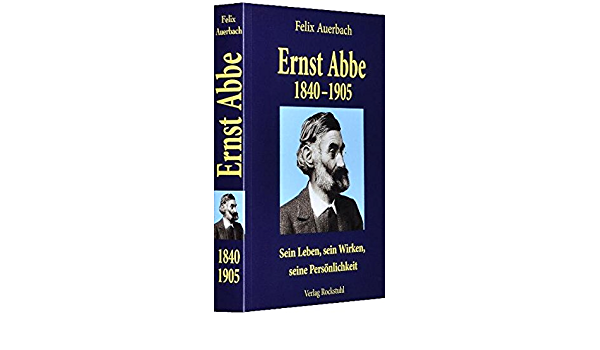He developed the modern microscope and the concept of optical engineering: Who is Ernst Abbe?
In 1875, he met industrialist Carl Zeiss, who was producing optical instruments. The cooperation between them turned into a partnership in a short time and Zeiss factories became one of the few big companies in the world.

(1840-1905) German physicist and industrialist. He developed the modern microscope and the concept of optical engineering and tried to institutionalize the social security system he envisaged for his workers. He was born on January 23, 1840, in Eisenach, Thuringia. His father was a weaving worker. Therefore, he grew up watching the problems brought on by a 14-16 hour workday closely. He studied at the universities of Göttingen and Jena, entered the Faculty of Physics at the University of Jena as a lecturer in 1863, and was promoted to professor in 1870.
Ernst Karl Abbe HonFRMS (23 January 1840 – 14 January 1905) was a German physicist, optical scientist, entrepreneur, and social reformer. Together with Otto Schott and Carl Zeiss, he developed numerous optical instruments. He was also a co-owner of Carl Zeiss AG, a German manufacturer of scientific microscopes, astronomical telescopes, planetariums, and other advanced optical systems.
In 1878, he was appointed as the director of the observatory of the same university. In 1875 he met industrialist Carl Zeiss, who was manufacturing optical instruments for the University of Jena. The cooperation between them turned into a partnership in a short time and Zeiss factories became one of the few big companies in the world.
Abbe died in Jena on January 14, 1905. The lenses used in the microscope, which entered the path of development in the 17th century, separated the white light into its colors, so image clarity could not be achieved. British optician Lister, who examined the problem theoretically for the first time in 1830, was able to bring two colors (usually blue and red) of different wavelengths (usually blue and red) into a single focus, using two separate lenses as a single lens. However, this achromatic lens did not have full image clarity either.
Thinking that Abbe's theoretical knowledge would complement his practical knowledge, Zeiss offered him a research directorate in his factory, where he produced the best optical instruments of the time. Due to the inadequacy of the optical glasses they used, not much progress could be made at first. In 1879 Abbe met Otto Schott, who was working on lithium glasses. Joining the partnership in 1884, Schott made glasses with borate and phosphate after a while. These glasses had different properties from the crystal lenses with a wide center in use at that time. Indeed, taking advantage of these new glasses, Abbe succeeded in developing apochromatic lenses in 1886 that eliminated primary and secondary diffraction of light. In this type of lens system, the focal length is the same as in the achromatic system, but the numerical aperture is larger, which depends on the diameter of the lens.
Before his greatest invention, the apochromatic lens, Abbe had tried new systems to increase the resolving power of the microscope and developed the immersion lens. In this eight-lens lens, cedarwood oil is dripped onto the lens closest to the object. Thanks to this oil drop, whose refractive index was the same as that of glass, the spherical aberration caused by the structure of the lens was eliminated in the image. Abbe, who thought that it was necessary to concentrate the light on the object being examined in order to make the image clearer, solved this problem by using a condenser lens (1872). Abbe proved all his inventions at the theoretical level and developed the concept of optical engineering by making this theoretical approach a part of the production process at Zeiss company. In order to obtain a clear image by preventing light deviation, he introduced the formula known as "aplanetism" or "Abbe sinus condition", and as a result of his calculations, the magnification limits of microscope lenses could be understood. Abbe is known as the creator of the modern microscope with all these works.
After Zeiss's death, Abbe became the sole owner of this internationally renowned company and in 1891 turned the foundation into a fund for scientific research and social development services. At that time, the German industry was experiencing its heyday. However, the working hours of the workers were too long. Abbe, who has been known as a defender of workers' rights since the day he joined the partnership, claimed that the compulsory deduction of contributions from the workers to the pension fund created by some social aid organizations aroused the fear of being fired at any moment. For this reason, he requested the abolition of the cessation obligation. He also suggested that if the worker is dismissed innocently, it should be supported by a help system to be established. In 1896, he transformed the Zeiss Fund into a cooperative in which workers, managers, and researchers shared the profits. Meanwhile, 500 workers had reduced the working day at the factory to nine hours. Workers, who worked at a faster pace to keep production at the same level, had a hard time initially, but in the end, the nine-hour working day was more productive than before. (1900).
------------------------------
History of ZEISS in Jena
https://www.zeiss.com/corporate/en/about-us/past/history/locations.html
